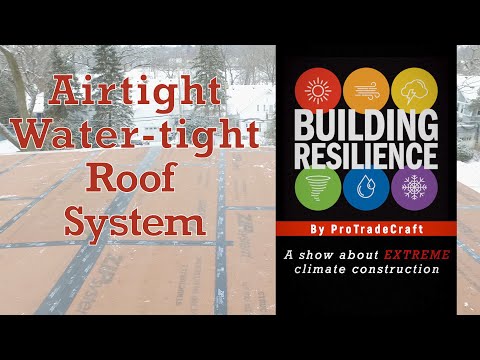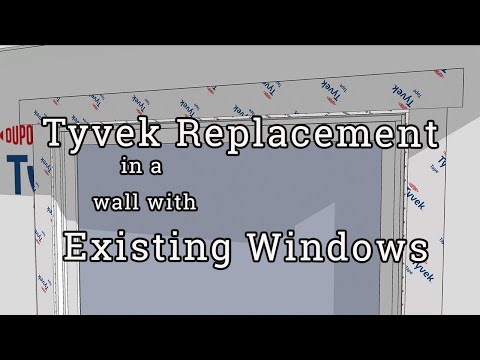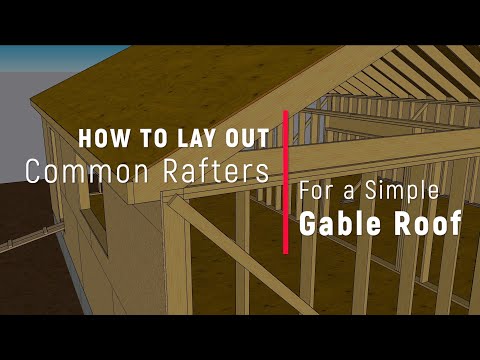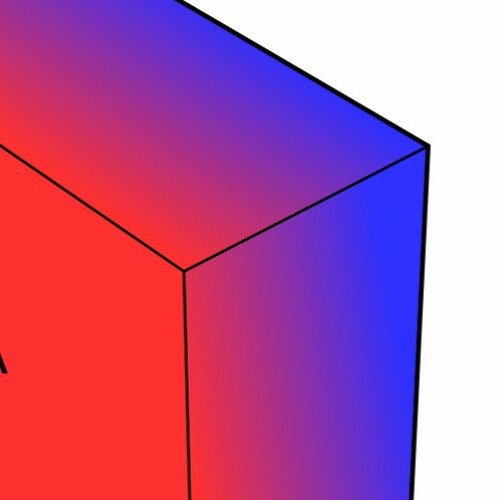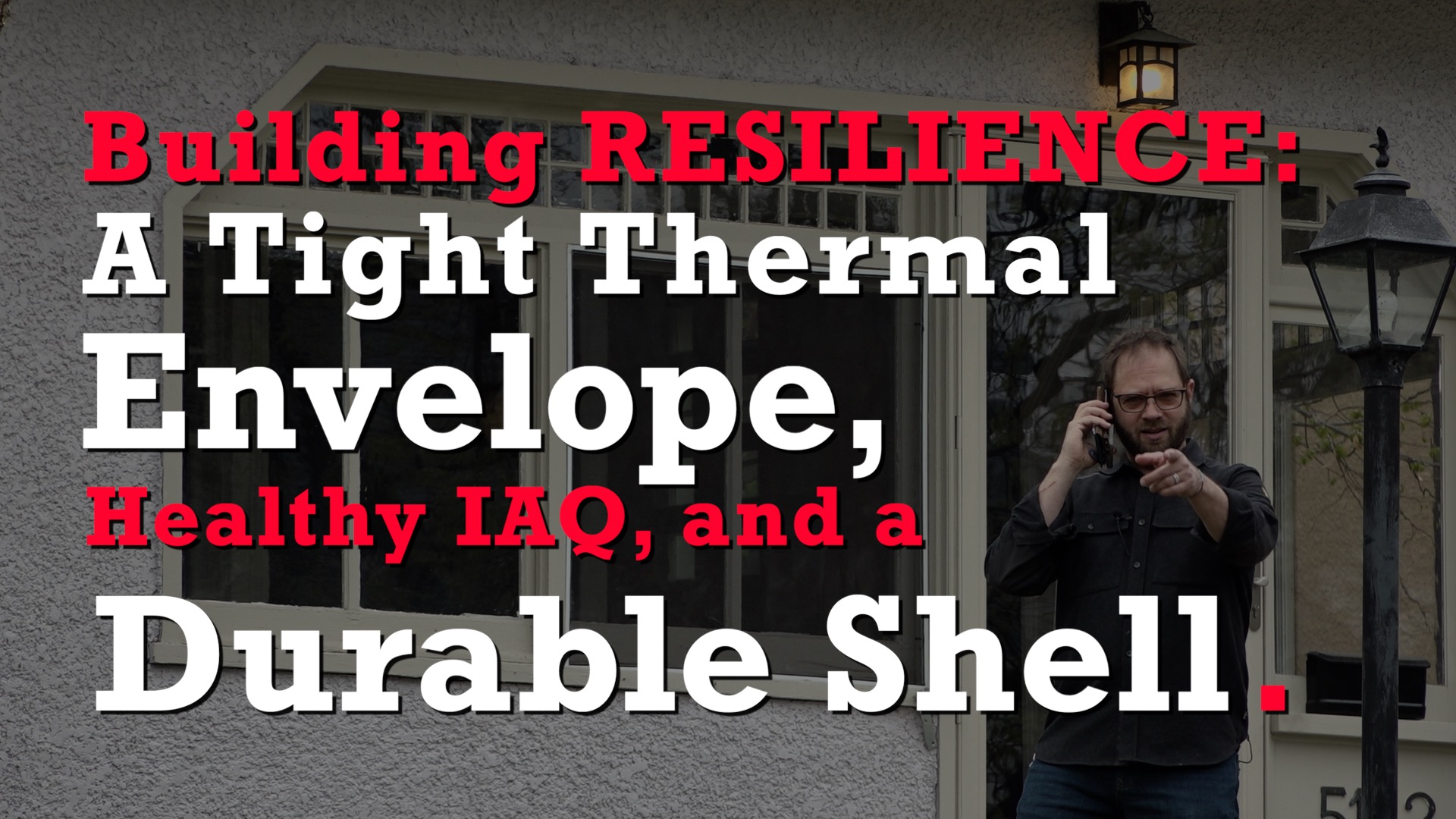Reviewing the WRB, exterior insulation, rainscreen, cladding, and deck detailing
Last time on Building Resilience we were wrapping up the construction side of things by building a deck with a total disregard for child labor laws. But that’s OK, because the kids are pretty good carpenters.
The decking was screwed down, cut off, and it turns out, helps to blur the distinction between the inside and the outside.
Michael Anschel: The Way that we constructed the deck, well, we had a couple of things that we wanted to achieve, right? I wanted to achoecve this inside to outside visual connection. That was one of my big challenges on the design side—How do I blur the lines that define inside and outside? Skycove did it upstairs in the baby’s room. The big multi-slide door really starts to blur that inside to outside bit, but I wanted to take it a step further.
Using a combination of the AZEK porch product in concert with the AZEK decking product allowed me to have the same texture and color. One product references porch, which is that in-between space, and then the other product—decking—looks like a deck. When the door’s open, you get that bridge across the two
Which is a good way to describe this episode, a bridge between the beginning and the end of construction.
What began as a simple winter construction project focusing on resilient design really took some convoluted turns.
But even before everything changed halfway into this project, we were testing the bounds of what was smart to take on.
We decided to shoot a remodeling project during the coldest months of the year, of the coldest state in the lower 49.
In the remodeler’s own house, which can be stressful.
A remodeler who just got married.
A remodeler who just got married and who was expecting a baby before the project was complete.
Expecting a baby before the project was complete on paper.
To me, that was a lot of red flags for filming a large construction project.
But that was nothing.
Covid shut down the country in the middle of our most important video shoot, which caused us to completely reformat how we shot and produced the show.
2020 so far has required a lot of resilience. So we think it was the perfect year to shoot and launch the show.
Against all odds, this project was completed in the correct year that it was supposed to be completed.
And the show went on.
We began in the middle when coronavirus disrupted all operations. We had been installing Marvin’s Modern Casement windows and Multi-Slide Door, but that’s not what the hubbub was about during that fateful video shoot. We had planned a large springtime gathering of technical experts from Marvin, a video crew, lots of cranes, and people in hard hats. And probably donuts.
That plan got significantly scaled back, but the finished product isn’t scaled back one bit.
Before installing windows, we built a foundation, floors, and walls.
And roofs.
Using ZIP System R-12 exterior insulating panels, we wrapped the house with a layer of warmth, and water protection.
Regular ZIP System roof sheathing went on the roof and all joints were sealed against water and air leaks with various ZIP System tapes.
It makes a tight shell for siding.
The most resilient way to install exterior cladding is to incorporate a ventilated rainscreen.
So we went one better and incorporated two different rainscreens for two different claddings.
Behind the Sheet cladding from AZEK, we used Benjamin Obdyke’s Slicker Max, a continuous entangled mesh material with an outer fabric that provides compression resistance.
SlickerMax provides 3-dimensional airflow behind the paintpro panels, making it a very resilient system.
Behind the open-joint cladding system, we used another rainscreen system: Benjamin Obdyke’s InvisiWrap UV with their Batten UV furring strips.
The hollow-core battens allow sideways airflow, which significantly improves furring strip performance.
The matte black InvisiWrap UV and fabricky tape do not reflect light from behind the AZEK cladding.
Like the decking that we just installed, the cladding is face screwed and plugged which eliminates needing to align fasteners over vast stretches of house.
It is installed the same way as the TimberTech decking because it is the same as TimberTech decking. It’s just installed on a wall.
It will last forever because it won’t rot. Ever.
Another thing that won’t rot ever is the large ¾-inch AZEK Sheets with PaintPro technology. Not only are they being installed over about half the house, but they’re being buried in the ground to protect the foundation’s exterior insulation.
The sheets are bordered by architectural metal trim profiles by Tamlyn called Tamlyn Extreme Trim, though we don’t know what’s extreme about them unless it's that they are extremely cool.
Finding a siding contractor for this proved difficult as many trades were in disarray at the beginning of COVID summer. We finally found a contractor who was good, but had never installed either system before, so it was an interactive, if distanced, experience.
To cap off the project, Michael chose to build the deck the old fashioned way: weekend warrior style using free child labor whenever possible.
The freestanding nature of the deck isolates it from the house against frost heave, it eliminates holes in the envelope, and it is less disruptive to repair or remodel later.
The end result of this construction project is stunning. It is also comfortable, energy-efficient, and durable. But is it Resilient?
We'll Investigate that next time...
